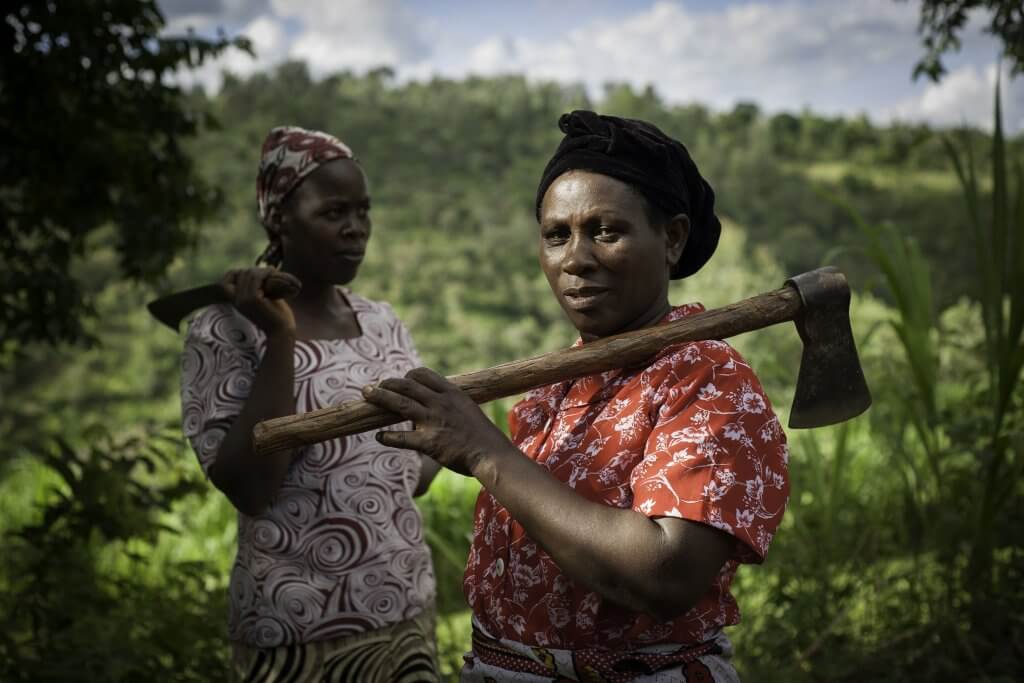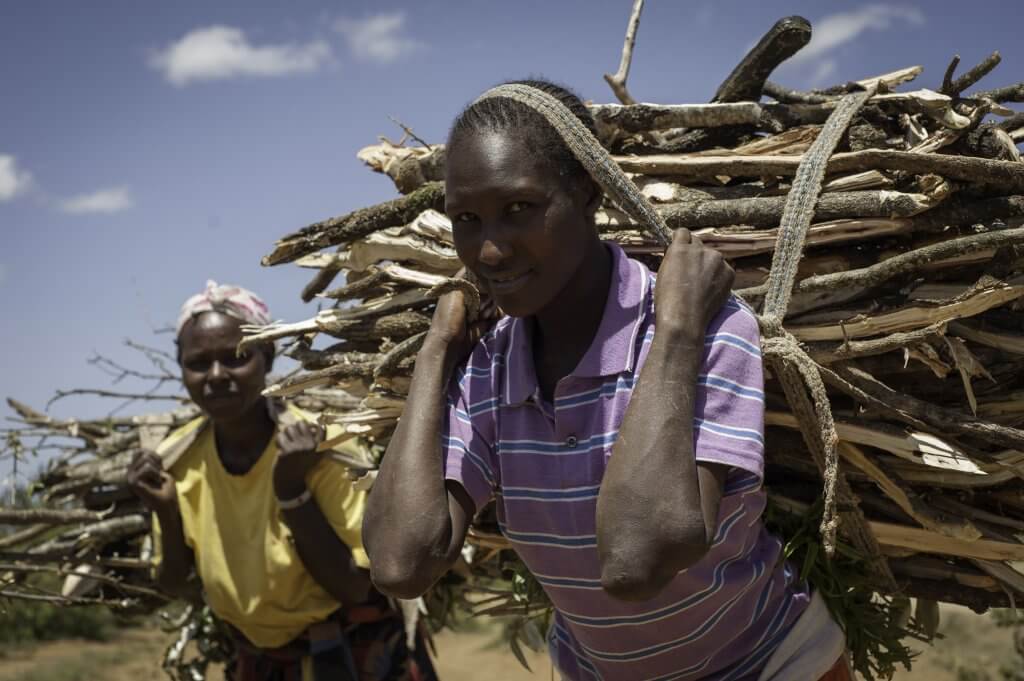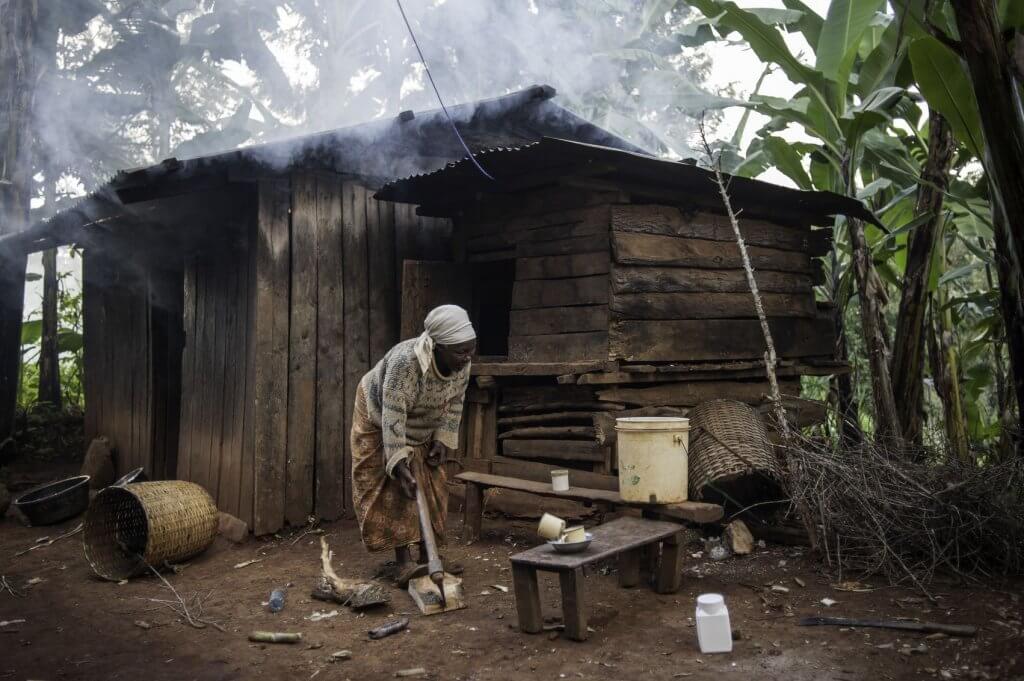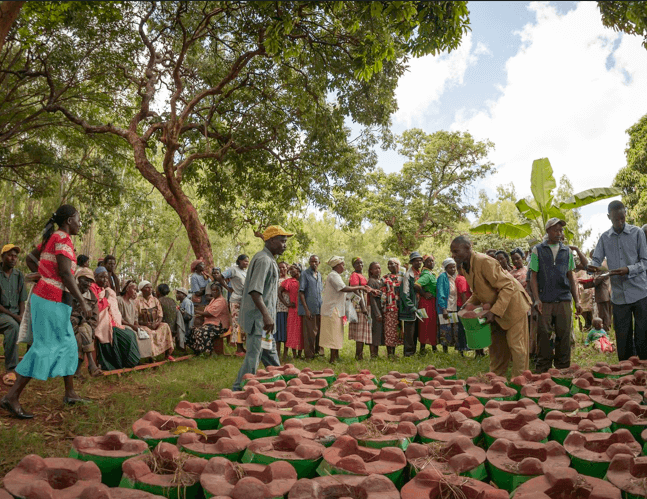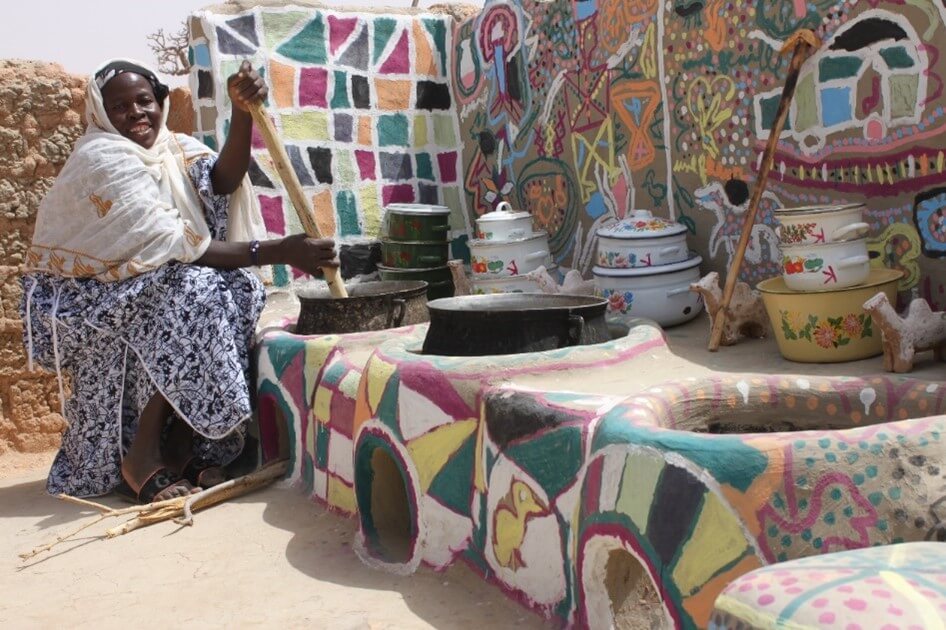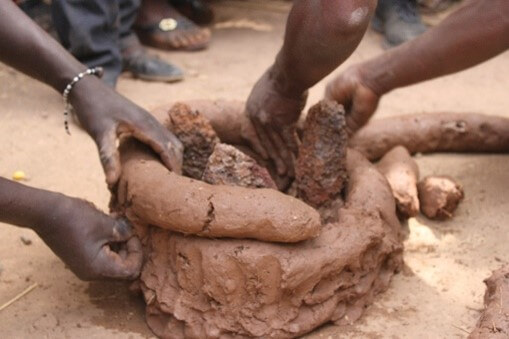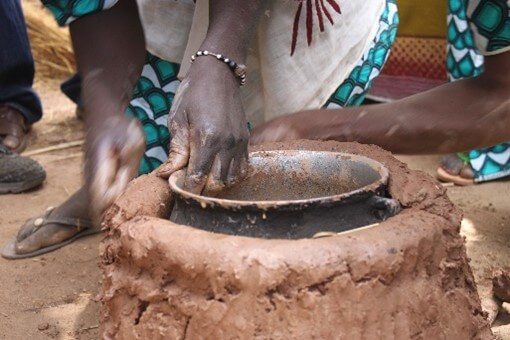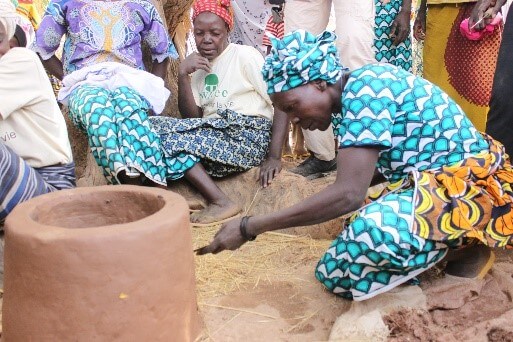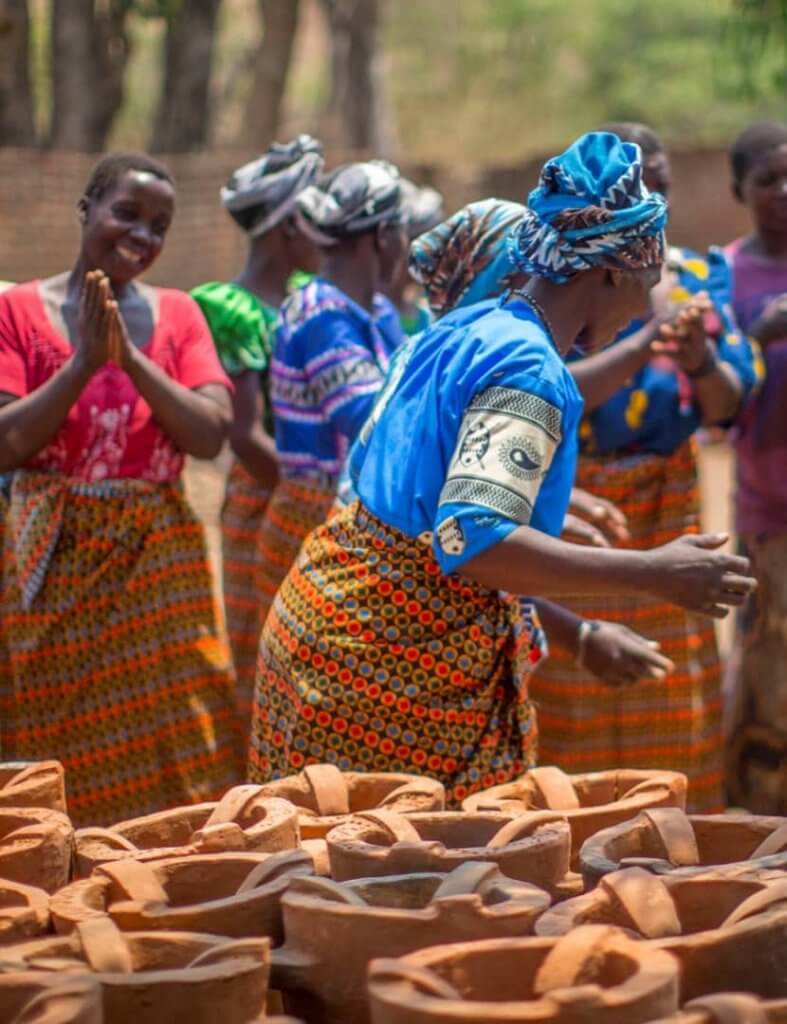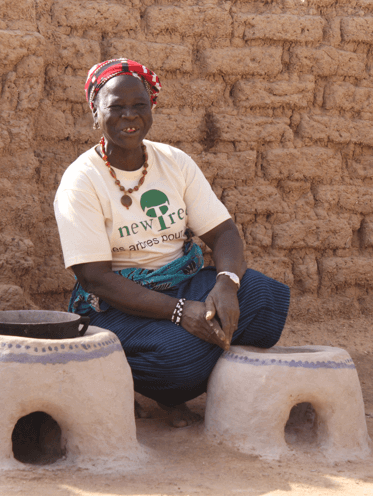REDUCING IS AS IMPORTANT AS REMOVING CARBON EMISSIONS
A decade. That is how long all of humanity has, to find solutions that will avoid the devastating impacts of a climate breakdown. Recent debates in the voluntary carbon market which set carbon emissions removal (taking Greenhouse Gas emissions out of the atmosphere thanks to trees for example) as more efficient than avoidance (reducing emissions from a business-as-usual scenario), are now evolving. In the urge to combat the climate crisis, the Science Based Targets initiative (SBTi) [1] which accompanies more than 4,000 businesses and financial institutions to reduce their emissions in line with climate science, is now encouraging all corporates for immediate action, beyond reduction efforts made within their value chains. Efficient cookstoves projects that contribute to fight deforestation are one of many concrete contributions to limit global warming to 1.5°C.
At Livelihoods, in addition to many removal reforestation, agroforestry or regenerative agriculture projects, we have invested in equipping rural households with efficient stoves that improve health and reduce deforestation and forest degradation for the past 10 years. Because the reality is that people in rural areas of emerging economies depend on wood or charcoal to cook their food. And that noxious smokes from traditional, inefficient stoves kill close to 4 million people [2] each year.
Is it more impactful to provide access to higher tech cookstoves such as gas or electricity to 10% of rural families who can afford it? Or to equip 90% of them with clean stoves that reduce wood consumption by up to 60%? Is it more sustainable to plant a new tree or to avoid cutting one? With reality certainly lying somewhere in between, we have one conviction: clean stoves technologies must be adapted to the local contexts and provide local communities with new economic opportunities in addition to preserving health & forests.
Many rural families still depend on forests to feed their families
In rural areas in most developing countries, people still strongly depend on solid fuels such as wood and charcoal, to cook their food. A total of 2.6 billion of them depend on food that is cooked over open “three stones” fires, or inefficient stoves that put a growing pressure on remaining forests and woodlots. In rural Kenya for example, a household consumes in average between 5 and 12 kg of wood per day [1], which is a large but necessary quantity when using traditional cooking methods. Women spend several hard-working hours a day to fetch wood in the surrounding environments which might be natural reserves, forests, or parks, and which are at several kilometers of walking distance. They come back to their village carrying around 20 kilos of wood, when and if wood is available. In other areas, such as in the northern villages of Senegal, at times women come back with no wood at all, due to a strong level of deforestation.
Inefficient cooking damages forests & the climate…
It is an illusion to believe that alternative solutions such as gas or electricity will be accessible to most rural families anytime soon. In many African countries where cities are growing fast due to strong demographic pressure, wood remains an essential source of energy and its demand has increased steadily over the past 30 years. Firewood represents the bulk of household energy consumption. With gas or electricity being accessible only when subsidized by the government, wood remains by far the most widely used source of energy in most sub-Saharan African countries. In fact, the demand for wood as fuel accounts for nearly half the trees removed from the world’s forests [4] and more than three quarters in Africa and Asia.
Beyond putting pressure on forests, traditional, open fires are inefficient, because the wood or other solid fuels such as charcoal, crop residue or dung, does not burn efficiently, and toxic smokes are emitted. These toxic smokes include greenhouse gases such as carbon dioxide (CO2),and other air pollutants such as black carbon. Commonly known as soot, black carbon is the second largest contributor to climate change after CO2.
… and cause 4 million premature deaths, yearly
Inefficient stoves also expose the whole household to air pollution, as the thin particles of the black carbon and other toxic gases can easily find their way deep into lungs and the bloodstream. The inhalation of such particles causes diseases such as childhood pneumonia, chronic obstructive pulmonary disorder, heart disease, stroke, and lung cancer. And the numbers are alarming: every year, up to 4 million premature deaths worldwide are caused by household air pollution from inefficient cooking, lighting, and heating.
Exposure to household air pollution also directly affects pregnant women and their infants. According to the Clean Cooking Alliance [5] when pregnant women are exposed to household toxic smokes, their infants are at increased risk for stillbirth, low birth weight and decreased lung function. In sub-Saharan Africa and Asia, 450,000 children under 5 years old die prematurely, each year.
Clean stoves can save lives & trees
In the past few decades, it has been proven that clean stoves have a direct positive impact on women’s and their households’ health, as they reduce the emission of toxic smokes significantly. The Clean Cooking Alliance mentions proven health improvements such as: reduced severe pneumonia cases in young children, reduced duration of respiratory infections in children, lower blood pressure in pregnant women, increased weights, and gestational age at birth [6].
Livelihoods’ experience on the ground shows that efficient stoves help reduce firewood consumption for domestical use by up to 60%, a critical point especially in areas which are suffering from desertification. One of Livelihoods projects implemented in Kenya is located around Mount Kenya, Africa’s second highest peak which culminates at 5,200 meters. This mountainous region is a key watershed not only for the population living around it, but for the whole country and East Africa. Thanks to the project’s efficient cookstoves, there is less pressure on the national park protecting the highest area of the mountains, farmers harvest and collect less trees in their farm or the environment, and this contributes to reduced soil erosion.
Implemented across Embu County since 2014 and Tharaka Nithi County since 2019, Livelihoods-Hifadhi project in Kenya is meeting great success as rural families have embraced clean stoves. 120,000 households have been equipped so far, which impacts positively over 500,000 people. To date, the efficient stoves distributed have helped save more than the equivalent of 60,000 trees per year [7].
When a family registers to the project, not only do they receive a clean stove, but they are trained on its use and maintenance, as well as on cooking practices and basic nutrition aspects. In addition, all families are provided with tree seedlings to plant in their farm or close by. A total of 360, 000 trees have been planted thanks to the project to date, the equivalent to 450 hectares of forest.
In the very dry area of North Burkina Faso where wood is scarce, the efficient stoves distributed within Livelihoods-Tiipaalga project to 30,000 households are saving more than 45,000 trees per year and reduce wood consumption for domestic use by 60% as well.
There is no “one-size-fits-all” technology: the type of clean stoves must be adapted to the local contexts
Equipping rural families with clean stoves is one thing. But adapting the right type of technology and/or material to the local realities, such as family level of income is a whole different one. Livelihoods is supporting more than 300,000 households across Peru, Burkina Faso, Kenya, Malawi, and Nepal. But the clean stoves are always produced locally in these countries and generate jobs for the communities who benefit from them.
In Burkina Faso, a model adapted to strong poverty levels
In 2014, together with local NGO Tiipaalga, Livelihoods launched a 10-year initiative in Burkina Faso to equip 30,000 rural families with efficient stoves. In this part of the world which highly suffers from poverty especially during the dry season, the stoves are made from locally sourced ingredients such as manure, straw, water, and clay. These are easily accessible to rural households and for free. Thanks to Tiipaalga NGO’s field teams, the stoves are perfectly adapted to the local context: they reduce wood consumption by 60% in this arid region where desertification is accelerating and reduce toxic smokes emissions.
In the provinces of Bam and Loroum, where Livelihoods project is located, women often cook for an extended family of 10-15 people. Therefore, several cookstoves have been built, one close to another and painted by their own hands. The stoves are set outside their homes which are therefore protected from smokes.
What is more, rural families are trained to build their own stoves and distribute them in the villages, thus contributing to job creation. As the cookstoves consume less wood, families spend less money to buy fuelwood and can therefore use this money to sustain other household needs. Households save from 50 to 100 euros per year, which they used to purchase fuelwood in the past.
Villagers building an efficient stove with local material in Burkina Faso
In Kenya, Nepal, and Malawi, stoves create jobs
Across Kenya, Nepal and Malawi, the clean stoves selected by Livelihoods to be distributed to the rural families are all built by local small enterprises and/or craftsmen. Over the past 10 years, in Embu County, Kenya, Livelihoods has been supporting 120,000 families with efficient stoves which are mostly made from locally sourced metal and ceramic materials. The project and the stoves themselves are called “Hifadhi”, which means “to preserve” in local language Swahili. They are highly energy-efficient because of a ceramic liner that improves combustion and retains heat longer while cooking. The use of efficient stoves has a positive impact on beneficiaries’ health as they are less exposed to toxic smokes. The stoves also generate jobs related to stoves distribution and maintenance or replacement when they need to be renewed.
Local stoves ambassadors are in charge of promoting and selling the stoves. They are responsible for the training of the users and to make sure stoves remain functional. A total of around 150 direct and indirect jobs have therefore been created and 150 more shall be generated for the 10 coming years of the project. Plus, a recent field audit conducted in the project area highlighted that 80% of the ambassadors and 72% of the artisans are female.
In Malawi, 270 jobs will also be directly created or sustained for the distribution of a total of 60,000 efficient cookstoves in the villages. Whereas in Nepal, a recently launched project with local NGO Practical Action, will generate more than 450 direct and indirect jobs for the distribution of 75,000 efficient stoves.
Overall, in all geographies where Livelihoods operates with local partners, women’s everyday life is significantly improved. As less wood is needed for cooking, women save around 2 to 3 hours per day on wood collecting activities and/or save money on purchasing firewood. They can therefore spend more time on other activities while their children (often their daughters) have more time to go to school.
What does it take to implement clean stoves projects?
1. Reaching the last mile villages & families
It is about equipping households who have no access to alternative energy, who are disconnected and far away from the cities, and who directly rely on natural resources to feed their families. It is about providing “the last mile” villages, with cooking solutions that improve their health, and preserve their environment. For Livelihoods, this represents 120,000 families equipped with clean stoves in Kenya, 30,000 in Burkina Faso, but also 30,000 in Peru, and soon 60,000 in Malawi (close to 40,000 families equipped to date) and 72,000 in Nepal (the project was launched end of 2022). Each one of these stoves is traced, is named after its woman owner, and is therefore linked to a very specific family.
2. Measuring clean stoves’ efficiency over 10 years
The mission of the Livelihoods Funds is to reach isolated households who could not benefit from the stoves in the absence of a project and relies on well-organised women groups to raise awareness about the health and environmental impacts of traditional stoves, and who present the benefits of clean stoves and how they function. When women are convinced of the positive impacts of clean stoves, they express their will to be equipped with one, and a few weeks later, project representatives come to the villages to distribute the stoves. Each efficient stove distributed through Livelihoods carbon model, is traced, its efficiency as well as its carbon impact is measured. Over a period of 10 years, the efficiency and use of the clean stoves is measured yearly, and the carbon credits generated are delivered back to our partner investors.
3. Strong commitment from our local partners, despite complex political contexts
At times, these last mile distribution activities come with tremendous efforts in complex political times. In the terrible context of jihadist attacks which have been terrorising the country since 2015 and the north of Burkina Faso (where the project is being implemented) since 2018, Tiipaalga teams have been acting with courage and tenacity to pursue project activities. Avoiding zones at too much risk, keeping contact with the locals in Bam and Loroum and supporting their teams, they made the best efforts to keep the project going.
[1] The Science Based Targets initiative was launched in 2015 by the CDP (Carbon Disclosure Project), the United Nations Global Compact, World Resources Institute (WRI) and the World Wide Fund for Nature (WWF). Its goal is to help companies set carbon emissions reduction targets in line with evidence brought by climate science. After focusing on “Corporate Net-Zero” initiatives (within each company’s value chain), in September 2022 the Standard urged companies to take immediate action beyond their value chains and support activities that avoid/reduce or remove carbon emissions. More about the SBTi which has established itself as an authoritative voice and a reference in the climate sector: https://sciencebasedtargets.org/
[2] Source: World Health Organization, 2018: https://www.who.int/news-room/fact-sheets/detail/household-air-pollution-and-health
[3] Climate Pal (EcoAct): https://forestindustries.eu/content/clean-cook-stoves-promote-sustainability-local-resources
[4] Source: https://europa.eu/capacity4dev/articles/replacing-traditional-cooking-stoves-gas-stoves-transforming-lives
|5] The Clean Cooking Alliance is a non-profit organization which operates with the support of the United Nations to promote clean cooking technologies in lower and middle-income countries: https://cleancooking.org/
[6] Source, the Clean Cooking Alliance health fact sheet: https://cleancooking.org/wp-content/uploads/2022/05/CCA-Health-Factsheet-ENGLISH.pdf
|7] Estimations calculated based on trees of around 10m height and 30cm diameter.



